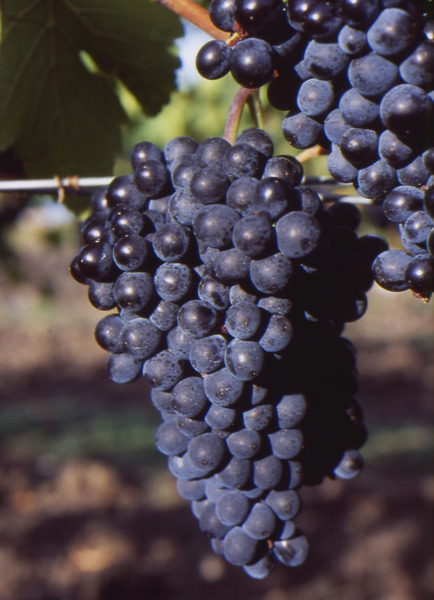By Mymi Myriam
Mozart, the Alps, Baroque architecture and Schnitzels are some of the things that spring to mind when thinking of Austria.
This alpine country is sadly not often first associated with wine, but when it is, the perception is that it produces mainly sweet wines.
That’s quite odd for a country that has been making wine for over four centuries, whose value of recent exports has grown by an impressive € 6 million, amounting to an outstanding sales record of € 145 million (according to the 2014 Austrian Wine Statistics report).
Austria ranks at #19 as a wine producing country, just a little behind New Zealand who is at #17 (according to the OIV’s April 2016 State of the Vitiviniculture World Market).
Another mystery about Austrian wines is the varietals used in their wine production. Over half of their vineyards are planted with native varietals which, from a marketing point of view could prove very tricky in trying to establish the country as a major wine player on a global scale.
However, instead of trying to blend in, Austria embraces its uniqueness and continually puts out intriguing wines that merit attention.
What’s more?
The location of Austria’s wine growing regions is at the 49th north parallel, so the country shares the same latitude as Burgundy’s wine capital, Beaune, Alsace’s famous wine producing region, the Haut Rhin, the Loire Valley’s Chinon AOC as well as Oregon’s Columbia Valley AVA just to name a few.
Yes, those are all considered cool climate regions producing impressive white wines, but with the emergence of global warming, those regions, are the proof that even in a cooler climates, it is now possible to produce note-worthy red wines.
Gruner Veltliner may be Austria’s most important white grape, planted in over 29% of its vineyards, but what’s interesting to note is that over the past two decades planting of red varieties have increased in Austria.
Both native and International varieties (including Merlot and sun-loving Syrah) are being planted allowing the country the opportunity to further expand into the red wine market.
The country has four main wine-growing regions that are further divided into sixteen districts. Each benefits from its own unique geographical features, soil structure and climactic conditions.
Cool air flows from the North affecting the country’s biggest wine growing region; Niederösterreich (1), temperate Mediterranean temperatures flow into Burgenland and Steiermark (3) and the warm Pannonian climate filters into the Wein region (2) giving Austria an overall moderate cool climate.
Thirteen grape varieties have been approved for the production of quality red wine taking up approximately one third of Austria’s vineyards. The key black grapes are native, with Zweigelt and Blaufraenkisch being the most significant in terms of vineyard plantings as well as popularity.
Zweigelt is a cross between two Austrian native grapes; Blaufraenkisch and St.Laurent. It occupies just over 14% of all plantings having doubled its vineyard presence by almost fifty percent since 1999.
Although very fertile, it demands very little from the soil but requires extensive canopy care. Zweigelt is widespread all over the country, but does exceptionally well in Carnuntum, a small area in Niederösterreich as well as the eastern shores of Neusiedlersee Lake Neusiedl in Burgenland.
It is often blended , however as the main star, it can produce a wide range of wines from the everyday unoaked easy drinking wine to the very robust and age-worthy bottlings to some exceptional sweet wines.
Displaying an abundance of berry in youth transforming into more sour cherry notes such as Morello’s with age. Some of the best producers include K&K Kimbauer, Frank Leth and Umathum.
Often used as a crossing parent, Blaufränkisch is Austria’s second most planted red native grape and well worth mentioning.
Also known as Gamé in Bulgaria, it was often mistaken for a Gamay Noir clone, but DNA analysis as revealed no connections between these two varietal, instead confirming that the Hungarian Kékfrankos grape is identical to Blaufränkisch.
Occupying 7% of all vineyard plantings, it is a vigorous varietal widely spread out through Burgenland and the eastern parts of the Niederösterreich wine growing region.
Jancis Robinson describes this grape as “being capable of a wide range of styles that truly express their very specific origins from light, fresh and fruity to deeply flavoured, dark fruited peppery, firmly structured, yet fresh age-worthy wines” illustrating just how versatile this grape can be.
Cooler vineyard sites such as the foothills of the Leithaberg Mountains in Burgenland, can produce some very elegant and complex wines while sites closer to Lake Neusiedl produce more rich and powerful examples. Some of the best producers include K&K Kimbauer, Prieler and Zantho Fine Wines.
Although less popular, another exciting Austrian red native is Sankt Laurent (St.Laurent).
It was named after St. Laurentius, patron saint of chefs, whose holy day falls on August 10th, the day at which the variety is said to start changing colour in the vineyard.
Difficult to grow, it is susceptible to many diseases and delivers erratic yields. It occupies 1.7% of the overall plantings, but saw an 87.5% growth increase in the vineyards since 1999.
It grows mainly in the southern area of Thermenregion in Niederösterreich and also in the northern part of Burgenland. Often mistaken for Pinot Noir, it shares the same velvety mouthfeel as well as the sour cherry notes but tends to be quite heftier and robust.
Producers to seek out are Zantho Fine Wines, Heinke Heinrich and Rabl.
As mentioned, international varieties have also been popping up in Austrian vineyards with Pinot Noir and Merlot being the most popular.
Pinot Noir, known here as Blauburgunder is gaining importance in Austria. Its growth increased by 58.6% between 1999 and 2009 and is planted in 1.4% of vineyards mostly in Niederösterreich’s Thermenregion area.
Merlot is used mostly as a blending partner and is planted almost everywhere except in the Steiermark where the terroir is more suitable for Cabernet Sauvignon.
The latter was brought into Austria in the 1980s as part of the international variety “invasion” and is used mostly as a single varietal or part of a cuvée blend.
Syrah is also present in Austria’s vineyards but because of its frost sensitivity, it can only be found in the country’s warmest areas. Cabernet Franc is quite popular in Burgenland where it is used as a blending agent but also increasingly as a main varietal.
With innovation, determination and the establishment of the country’s Wine Marketing Board, it is clear that Austria’s wine industry has moved way beyond the 1980’s anti-freeze scandal but still faces the challenge of the scarce availability of its delicious wines in international markets.
Other than some Gruner Veltliners, Austrian wines are difficult to find. In Ontario, other than attending the yearly Austrian Wine Fair (which I highly recommend) or being well connected with wine agents who import Austrian wines, the opportunity to sample them is limited to a very slim selection at the LCBO.
Even there, you will often need a magnifying glass in order to even locate the Austrian wine section.
In Québec though, no doubt because of the province’s more European vibe, the Austrian wine selection is more elaborate often including many St. Laurents, even a single varietal Pinot Noir, lucky you.
It is clear that we have unfortunately fallen victim to the old supply and demand stipulation here, so I am raising my glass and daring you to be different and embrace Austria’s uniqueness!

Mymi Myriam
Sommelier & Musician
Mymi is a sommelier, singer-songwriter, musician and voice-over artist with a serious and contagious passion for wine, food and music.
When asked why she is so enthusiastic about wine, she replies, “Wine connects so many elements of life that I absolutely love. From growing herbs and vegetables to cooking, eating, travelling, entertaining, studying. There is always something new to learn in the world of wine. Sharing my knowledge with people, no matter their level of expertise, is something I sincerely enjoy.”
Her qualifications include certifications from The Court of Master Sommeliers, The International Sommelier Guild, The Society of Wine Educators, The Ontario Wine Council and most recently, The French Wine Society. As a professional musician, she shares her knowledge of wine in an entertaining, down-to-earth, and unpretentious way.
She is completing the French Wine Society’s Master Level program, is in the early stages of creating a food/wine/music show is currently recording her first all-French album. Mymi is a regular contributor to NatalieMacLean.com.
















